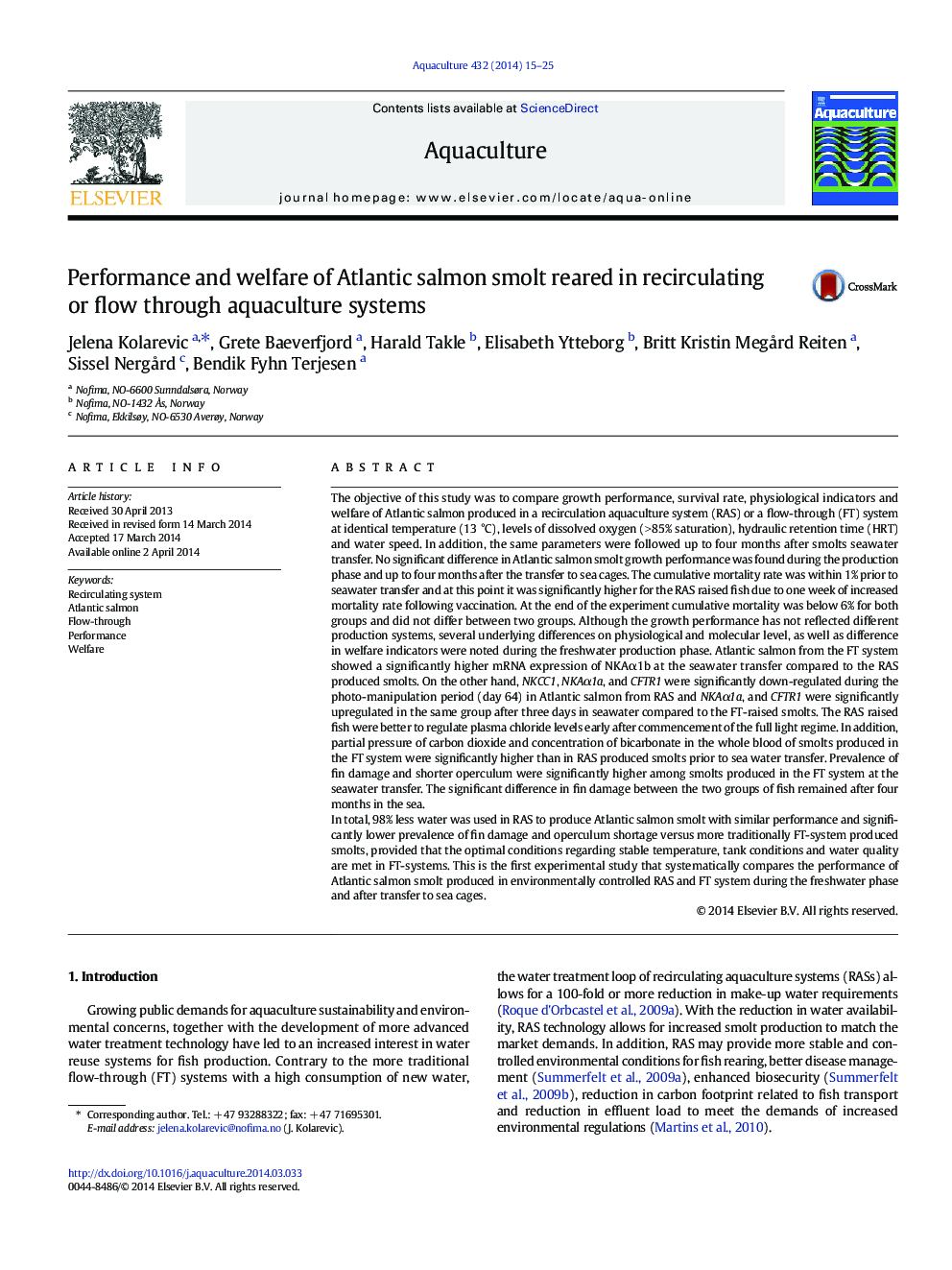| کد مقاله | کد نشریه | سال انتشار | مقاله انگلیسی | نسخه تمام متن |
|---|---|---|---|---|
| 2421809 | 1552855 | 2014 | 11 صفحه PDF | دانلود رایگان |
• This is the first study that systematically compares the performance of Atlantic salmon smolt produced in RAS and FT-system.
• The same water temperature, oxygenation level, HRT and water velocity were used in both systems.
• 98% less water was used in RAS to produce Atlantic salmon smolt compared to the FT-system.
• Several differences at physiological, molecular level and in examined welfare indicators
• Similar growth performance and survival rates of smolt are produced in two production systems.
The objective of this study was to compare growth performance, survival rate, physiological indicators and welfare of Atlantic salmon produced in a recirculation aquaculture system (RAS) or a flow-through (FT) system at identical temperature (13 °C), levels of dissolved oxygen (> 85% saturation), hydraulic retention time (HRT) and water speed. In addition, the same parameters were followed up to four months after smolts seawater transfer. No significant difference in Atlantic salmon smolt growth performance was found during the production phase and up to four months after the transfer to sea cages. The cumulative mortality rate was within 1% prior to seawater transfer and at this point it was significantly higher for the RAS raised fish due to one week of increased mortality rate following vaccination. At the end of the experiment cumulative mortality was below 6% for both groups and did not differ between two groups. Although the growth performance has not reflected different production systems, several underlying differences on physiological and molecular level, as well as difference in welfare indicators were noted during the freshwater production phase. Atlantic salmon from the FT system showed a significantly higher mRNA expression of NKAα1b at the seawater transfer compared to the RAS produced smolts. On the other hand, NKCC1, NKAα1a, and CFTR1 were significantly down-regulated during the photo-manipulation period (day 64) in Atlantic salmon from RAS and NKAα1a, and CFTR1 were significantly upregulated in the same group after three days in seawater compared to the FT-raised smolts. The RAS raised fish were better to regulate plasma chloride levels early after commencement of the full light regime. In addition, partial pressure of carbon dioxide and concentration of bicarbonate in the whole blood of smolts produced in the FT system were significantly higher than in RAS produced smolts prior to sea water transfer. Prevalence of fin damage and shorter operculum were significantly higher among smolts produced in the FT system at the seawater transfer. The significant difference in fin damage between the two groups of fish remained after four months in the sea.In total, 98% less water was used in RAS to produce Atlantic salmon smolt with similar performance and significantly lower prevalence of fin damage and operculum shortage versus more traditionally FT-system produced smolts, provided that the optimal conditions regarding stable temperature, tank conditions and water quality are met in FT-systems. This is the first experimental study that systematically compares the performance of Atlantic salmon smolt produced in environmentally controlled RAS and FT system during the freshwater phase and after transfer to sea cages.
Journal: Aquaculture - Volume 432, 20 August 2014, Pages 15–25
